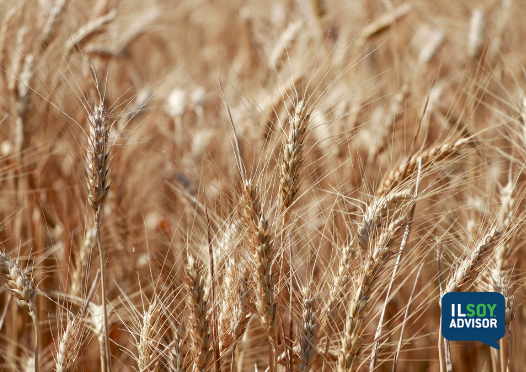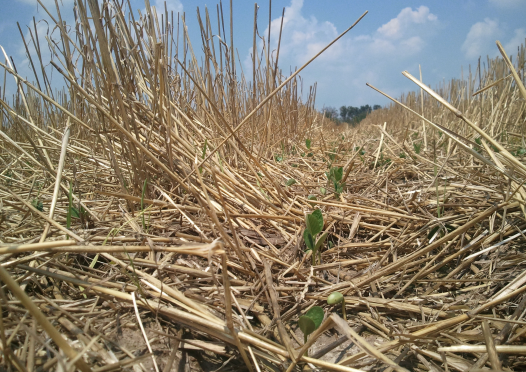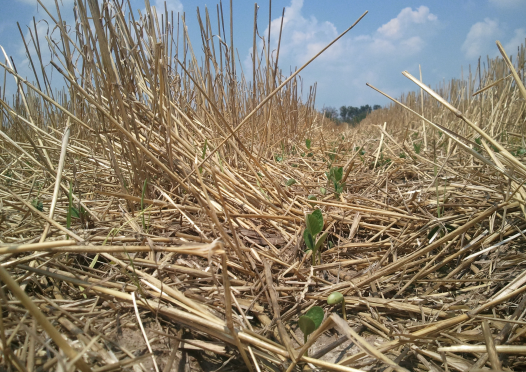ILSOYADVISOR POST
BMPs for Double Cropped Beans
Double cropping soybeans is popular in southern Illinois where many producers plant some soybeans after combining wheat. Doubling cropping soybeans isn’t without challenges, which can result in low yields. However, there are some solutions which begin with harvesting wheat early and planting soybeans sooner, planting into a good seedbed to achieve good emergence, and managing the crop so it will yield similar to full season soybeans.
Illinois participated in a regional double crop project in 2016. States close to the Ohio River that were involved included Illinois, Indiana, Kentucky, Missouri, Ohio. The institutions involved included Illinois –John Bailey, JCB Ag Research; Indiana – Shaun Casteel, Purdue University; Kentucky – Carrie Knott, University of Kentucky; Missouri – Bill Weibold, University of Missouri; Ohio – Laura Lindsey, Ohio State University.
The team involved with the project developed this set of best management practicies (BMPs) based both on past research and best agronomic recommendations. Most of these pertain to the wheat crop and timely planting of soybeans. Not enough research has been done to develop BMPs for seed treatments, foliar protection, and foliar feeding of nutrients and PGRs.
- Reduced yield from late planted soybean (a Date of Planting effect).
- Select a high-yielding wheat variety that matures early to allow earlier soybean planting.
- In northern portion of Double Crop (DC) region, consider harvesting wheat early and drying grain. Be sure to calculate economics.
- Do not delay soybean planting. Eliminate soybean management practices that could delay planting; e.g., tillage, preplant herbicides.
- Planting quickly is a greater concern in northern portion of DC region.
- Reduced income from late planted soybean (because of lower yield).
- Reduce trips across field. For example, fertilize both crops in wheat portion of system.
- Consider using only post emergence herbicides and apply only when weeds present will decrease yield.
- Wheat straw may interfere with planting and seedling emergence.
- Consider straw as an additional income source, but only if straw provides greater profit than is lost from delayed soybean planting.
- Spread chopped wheat straw fully across entire header while combining wheat.
- Do not burn wheat straw (Note: still legal in Missouri and used in southeast Missouri)
- Hair-pinning of wheat straw into the V-trench and around the soybean seedbed can create a barrier to water update, wick away soil moisture, dry seedbed, and reduce soybean emergence.
- Make sure soil openers are tuned and adjusted.
- Plant soybean when wheat straw is dry and easier to cut.
- Soil moisture availability may be reduced because of wheat growth and/or seasonal distribution of precipitation with much of seasonal rains falling before the soybeans are planted and up. Warmer air temperatures associated with late planting dates increase water evaporation and stress.
- Use no-tillage to reduce water evaporation from soil before and after soybean planting.
- Soil temperatures may exceed optimum for soybean seed germination in late June and July.
- Retain residue on the soil surface.
- Use no-tillage to provide mulch cover on soil surface.
- Both vegetative and reproductive growth phases occur during shortening photoperiods. Total amount of light available for photosynthesis is less.
- Use narrow row widths to increase light capture and earlier canopy closure; 15-inch better than 30- or 38-inch (cotton planter).
- Use a planter with narrow row capacity to improve seed placement (depth and spacing) for better germination and establishment.
- Use a drill for planting soybean (10-inch row spacing or less) if seed metering and soil depth control challenges can be met.
- Delayed soybean planting date will decrease the number of main stem nodes and branch number/length.
- Increase target stand 20,000 to 40,000 plants per acre. Magnitude of increase depends on target stand for full season soybean system. Smaller full season target stand means greater increase needed in target stand for DC system.
- Fewer number of days between soybean planting and first fall freeze.
- Do not change maturity of selected variety from “normal” for full season system.
- Delayed maturity of soybean allows for increased pest incidence during seed-filling from pests that migrate from southern soybean fields.
- Scout fields and apply fungicides and/or insecticides if appropriate. Leaf area needed to produce components of yield.
Soybean agronomist Daniel Davidson, Ph.D. posts blogs on agronomy-related topics. Feel free to contact him at djdavidson@agwrite.com or ring him at 402-649-5919.





Comments
Add new comment